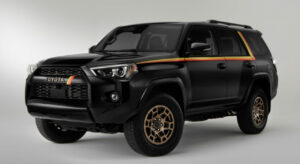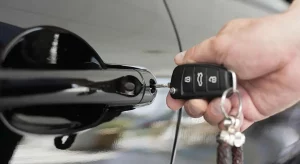Imagine having an ever-watchful companion on your journey, capturing every moment on the road. Dash cams, the rising stars of modern driving, do just that. They’re more than a gadget; Dash cams help if an accident happens and no wonder why they are getting more and more popular.
In 2021, the global dash cam market hit $3.38 billion. It’s expected to grow by 9.5% each year from 2022 to 2030. Most of this growth comes from personal vehicles. The chart below breaks down the market by its application.
Personal vehicles accounted for a share of more than 65.00% of the overall revenue in 2021. It’s evident that dash cams are more than just a trend. They are an integral part of modern driving. But what makes these devices so essential? Let’s explore dash cams. We’ll see their key roles and safety perks.
The Mechanics Behind Dash Cams
Dash cams utilize digital camera technology to record footage while driving continuously. But what’s the difference between regular digital cameras and dash cams?
- Digital Cameras: Capture still images using image sensors and store them digitally. Most lack continuous recording capabilities.
- Dash cams: Use similar image sensor technology but are optimized for video recording. They continuously loop footage and automatically record when the ignition turns on.
This ability to capture driving footage is what makes dash cams so valuable. Video recordings give clear proof of accidents, traffic tickets, or crimes.
Sophistication in Modern Dash Cams
Dash cams have come a long way from simple video recorders. Modern dash cams boast a range of sophisticated features:
- GPS Tracking: Records location, speed, and route details for every trip.
- Night Vision: Captures enhanced footage in low light conditions.
- Motion Detection: Automatically begins recording if any motion is detected near the vehicle.
- Wi-Fi Connectivity: Allows accessing or downloading footage remotely via smartphone.
- ADAS Integration: It connects with systems like collision alerts and lane departure warnings.
Place dash cams right. Mount them high on the windshield for the best view. For drivers wanting coverage of both the front and rear, a dual channel or front and rear dash cam system is recommended. This allows you to capture footage from both directions simultaneously.
Activation and Recording Mechanisms
The core functionality of dash cams centers around automated recording:
- Ignition Activation: Dash cams switch on automatically when the ignition starts.
- Loop Recording: The cam records short clips and replaces the oldest ones.
- Incident Recording: A hit locks the current clip to save it.
- Parking Mode: It watches parked cars and records when it senses movement.
These automated recording mechanisms ensure driving activity is thoroughly documented. The COVID-19 pandemic caused a dip in adoption due to fewer vehicles on the road. But, the industry still promotes dash cams with education and support.
Legal Implications of Using Dash Cams
While dash cams provide invaluable visual evidence, their use is regulated:
- In Europe, laws prohibit dash cams from interfering with driving or leaking personal information.
- In the US, you can record video but audio rules change by state.
- Privacy matters. Don’t record passengers without asking.
Know the laws to use dash cams correctly and avoid issues.
Suggestion: 11 Best Souped-Up Cars – A Perfect List Of Custom Cars
Diverse Types of Dash Cams and Their Purposes
Not all dash cams are created equal. The type you need depends on your specific requirements:
- Single-Channel: Entry-level option suitable for regular drivers.
- Multi-Channel: Allows adding multiple cameras for complete 360° coverage. Ideal for commercial vehicles.
- AI Dash cams: They learn to spot crashes, lane shifts, and tired drivers.
- In-Vehicle Dash cams: Discreet, concealed directly into the car chassis.
- Portable Dash cams: Compact models that are easy to install in multiple vehicles. Great for rental cars.
- Wireless Dash cams: Transmit footage to the cloud via LTE networks. No need to extract SD cards.
The Primary Purpose of Front and Rear Dash Cams
While dash cam types vary, front and rear cameras are considered standard:
Front Dash Cams
- Record accidents, collisions, or sudden stops
- Capture footage to determine fault and liability
- Document traffic violations of other drivers
Rear Dash Cams
- Record incidents that only affect the rear
- Capture damage from rear collisions
- Monitor blind spots and reverse footage
Together, front and rear cameras provide comprehensive protection. Some even integrate telematics solutions that transmit crash notifications and real-time location data via cellular networks.
Key Considerations When Choosing a Dash Cam
With a myriad of dash cam options, keep these factors in mind:
- Placement: Windshield mounting offers an optimal viewing angle. Check state laws for placement regulations.
- Video Quality: Higher resolution and night vision provide enhanced footage.
- Size: Compact and discreet dash cams are easier to mount.
- Features: Determine which extra features (GPS, Wi-Fi, etc.) you require.
- Price: Set a budget but don’t compromise too much on video quality.
Also Check: 11+ Best Cars With V12 Engines That You Can Buy In 2023
Do your research to find a dash cam that perfectly suits your budget, vehicle, and specific needs.
The Ideal Audience for Front and Rear Dash Cams
Dash cams offer universal benefits but are especially advantageous for:
- Businesses: Fleet vehicles are prone to accidents. Multi-channel dashcams help determine liability. Live tracking helps optimize routes.
- Individual Drivers: Protect against false insurance claims in case of collisions. Document any violations by other drivers.
- Rideshare Drivers: Maintain safety for passengers. Record interactions to prevent dispute claims. Enable location sharing with the company and passengers.
For fleet managers, AI dash cams provide additional insights into driving patterns, road risks, idle times, and more.
The Value Proposition of Front and Rear Dash Cams
The benefits offered by dash cams make them well worth the investment:
- Provide evidence in case of accidents, theft, vandalism, or crimes.
- Faster insurance claim settlements by assigning fault conclusively.
- Monitor drivers to encourage safe driving habits.
- Offer peace of mind to personal ones.
- Reduce liability risks for commercial fleet companies.
- Notifies on real-time alerts via cloud connectivity.
For both professional and personal drivers, dash cams boost safety and accountability.
Suggestion: 11 Best SUVs For Snow That You Must Check Out In 2023
Final Thoughts
Front and rear dash cams boost road safety. They give peace of mind to drivers and passengers. The cameras document incidents if they happen. They help settle claims quickly. Many believe they encourage safe driving.
All drivers benefit from the extra visibility. Dash cams add security on the road. They help keep riders safe. So use them responsibly. Let dash cams watch the road for you. They provide an extra layer of protection.
FAQs
- How can footage help insurance claims?
Footage can be used as strong evidence. It also helps to speed up the process. Prevents bogus claims. Some insurers even offer dash cam discounts!
- Any privacy concerns with interior cams?
Yes. you have to get consent first. Mute audio if required. Remove the camera if the local laws disagree.
- Do AI dash cams have advantages?
AI offers extras like collision alerts. It helps you in parking, driver monitoring, and smart analysis for fleets. But the tech costs more. Not for everyone.




